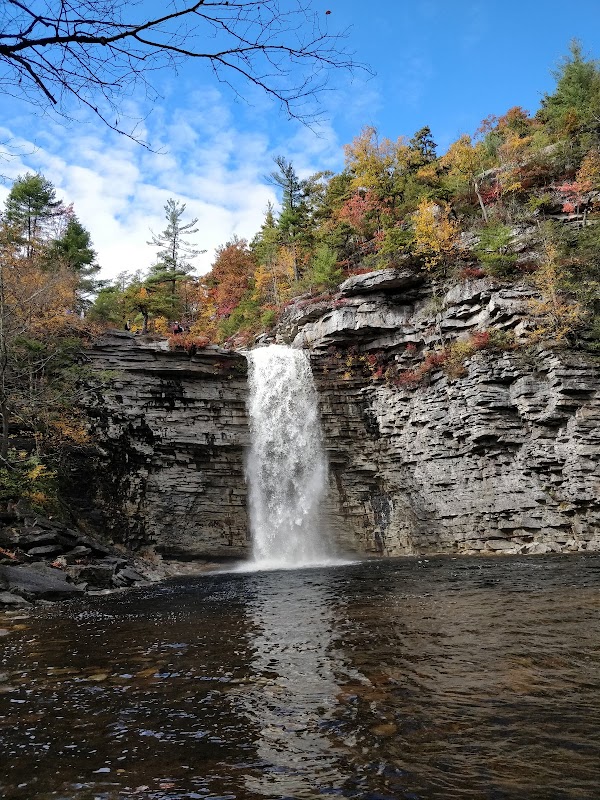
Exploring the Garden & Art Tour at Planting Fields, Oyster Bay
The Garden & Art Tour at Planting Fields in Oyster Bay combines a manageable 2-mile walk with vibrant gardens and outdoor sculptures that engage the senses. Perfect for casual explorers and art lovers alike, this tour blends natural beauty with cultural enrichment in every step.
Choose Grip-Friendly Footwear
The tour covers varied terrain including paved walkways and natural soil paths which can become slippery when wet. Hiking shoes or sturdy sneakers with good traction are ideal.
Hydrate Before You Go
Carry at least one liter of water, especially during spring and summer when temperatures rise and shaded areas are limited. There are limited water fountains along the route.
Visit During Off-Peak Hours
Arrive early morning or late afternoon to enjoy calmer crowds and softer, more flattering light for viewing both gardens and sculptures.
Prepare for Variable Weather
Weather in Oyster Bay can shift quickly, especially in fall and spring. Pack a light rain jacket or windbreaker to stay comfortable during sudden changes.
Exploring the Garden & Art Tour at Planting Fields, Oyster Bay
Planting Fields Arboretum in Oyster Bay, New York, offers a refreshing blend of cultivated gardens and outdoor art on an accessible yet invigorating walk. The Garden & Art Tour stretches across roughly 2 miles of well-maintained paths, featuring gentle elevation changes topping out at around 150 feet. It’s a comfortable route for hikers of all levels — from weekend wanderers to more seasoned explorers — with a terrain that moves from wide garden walkways to shaded woodland trails.
As you move through the space, towering oaks and maples flex their branches above, their leaves whispering encouragement. Sculptures by local and international artists pepper the grounds, their forms rising from the greenery with playful energy, inviting reflection and a fresh perspective. The art does not just sit in place; it challenges you to consider the space around you, framing the natural world with crafted intention.
Timing your visit is key. Spring brings bursts of azaleas and rhododendrons, while summer’s vibrant flower beds hum with the buzz of pollinators. Fall reveals fiery foliage that cloaks the grounds in warm shades, making the outdoor exhibits stand out against the backdrop. Winter strips back the layers, giving a stark, clean view of the garden’s structure and the garden’s stately greenhouses that hold life even in the cold months.
Footwear should prioritize comfort with good traction, as some paths become slick after rain. Bring plenty of water; while the tour is moderate in length, the mix of sun-exposed garden sections and enclosed forest paths means your hydration needs can shift unexpectedly. Early morning or late afternoon visits offer softer light for viewing the art and keep you ahead of crowds.
For those looking to combine nature, culture, and light exercise, the Garden & Art Tour at Planting Fields presents an engaging opportunity — a way to engage multiple senses and interests while moving steadily through an environment that’s distinctly itself. This is a journey with practical rewards: fresh air, mild physical challenge, and a visual feast that demands attention and reflection. Respecting the space and the art, while letting yourself be quietly pushed forward by the environment, makes for an experience that satisfies both body and mind.
Nearby Trips
All Adventures
Boat Charters
Water Activities
Adventures near Oyster Bay, New York
Discover the unique and memorable adventures that make Oyster Bay, New York special.
Frequently Asked Questions
Are dogs allowed on the Garden & Art Tour at Planting Fields?
Dogs are not permitted on the garden paths or inside the arboretum grounds to protect the delicate plant life and maintain a quiet environment around the art installations.
Is there wheelchair access along the tour routes?
Many garden areas and carriage paths are wheelchair accessible, but some of the natural trails may present challenges due to uneven terrain. It’s best to check with the visitor center for the latest accessibility updates.
Can I bring food and have a picnic during the tour?
Picnic areas are available outside the main garden paths. For a respectful experience around the plants and art, consuming food within the tour path boundaries is discouraged.
Are guided tours available for the Garden & Art Tour?
Guided tours are offered seasonally and provide deeper insights into the history, plant species, and art installations. Advance reservations are recommended during peak seasons.
What is the best way to capture photos of the sculptures?
Visit early in the morning or late afternoon when natural light softly highlights the shapes. Sculptures near the Rose Garden and the Formal Gardens provide dramatic contrasts with greenery.
Are there any unique plants or species to look out for?
The arboretum features mature magnolia and rare camellia specimens that flower at different times in spring and fall, alongside a collection of native wildflowers in the woodland sections.
Recommended Gear
Sturdy Hiking Shoes
Provide good traction and foot support for mixed garden paths and wooded trails.
Water Bottle
Hydration is critical, especially in warmer months or for longer visits.
Light Rain Jacket
Protects against sudden spring showers common in the region.
Sun Protection (Hat, Sunglasses, Sunscreen)
Needed to guard against sun exposure during the open garden segments.
Local Insights
Hidden Gems
- "The secluded Kinnikinnick Woods, where native wildflowers bloom quietly off the main paths."
- "The Secret Garden maze offers a quieter reflective space away from the busier formal gardens."
Wildlife
- "White-tailed deer often graze in wooded areas early morning or late afternoon."
- "Local songbirds such as the Eastern towhee and wood thrush add natural soundtracks along the trails."
History
"Originally the Gold Coast estate of the Coe family, the arboretum preserves historic landscapes combined with the vision of E.H. Strain, who turned the estate into a public horticultural gem in the early 20th century."
